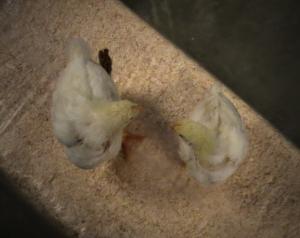Background

The intense selection for high juvenile growth, improved feed conversion and high carcass yield in the modern broiler chicken has increased the productivity and financial gain of the meat chicken industry over the past decades. It has, however, also brought on major welfare challenges primarily for the parental stock, the broiler breeders, due to the apparent incompatibility between rapid growth, physical health and high reproductive performance. To induce a slower and more healthy growth curve than that of their offspring, broiler breeders are commonly managed under various different feed restriction regimes. Such rearing practises have received substantial criticism due to the potential negative impacts on welfare derived from increased stress and the induction of chronic hunger. Although there is no doubt that feed restriction effectively deals with the negative consequences of rapid growth, further research is needed in order to better understand the additional welfare challanges that arise as a consequence. One major challenge related to both stress and hunger is the development of growth heterogeneity.
Although being genetically very similar, when feed restricted broiler breeders display considerable individual variation in growth. Why this development occur is largely unknown, however it has been argued to be a consequence of unequal food acquisition due to unequal competition success. The concern is then that individuals that become small are those less successful in acquiring feed, and as a consequence these birds may be even more feed restricted than the average bird and hence experience decreased welfare. Practices to mitigate growth heterogeneity include size sorting at 4 weeks of age, and in many parts of the world also Skip-a-day feeding regimes during the majority of the rearing period (commonly from week 6-16 weeks of age), as this is thought to reduce feed competition. Few studies, however, have focused on acually quantifying any potential welfare differences due to growth heterogeneity or to investigate which individual characteristics may be important in determining competition success in a resource limited environment.
Aims of the study
To investigate welfare differences within a flock of broiler breeder females by characterising the stress coping ability of small and large individuals through the concept of coping styles. This study focused on potential behavioural differences.
Responsible for this page:
Director of undergraduate studies Biology
Last updated:
05/19/15
